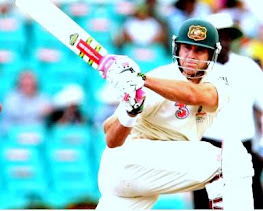In
cricket, we have seen cricketers with multiple talents. Some bowlers like
Andrew Symonds and Sachin Tendulkar could ball both spin and gentle medium
pace. This often left doubts in opponent batsmen’s minds. But times have
changed and the cricketing minds are always in search of new plans and ideas. From
early times we have seen ambidextrous cricketers. They used to bat with one
hand and ball with the other. Players like Saurav Ganguly, Thisara Perera,
James Anderson, Stuart Broad, and Kagiso Rabada used to ball with the right
hand, but bat with the left. There were some like Zaheer Khan who bowled with
his left hand but batted right-handed. But now we are witnessing some other
talents in bowlers, who can bowl with both of their hands. This bunch of
ambidextrous bowlers may become a boon to their respective teams in the future.
Kamindu Mendis
The
Srilankan is primarily a left-handed batsman who plays for Srilanka in all
three formats of the game. He has played 16 T20s, 9 ODIs, and 4 Test matches.
In as many test matches he has scored 3 centuries and 2 half centuries. He has
picked 5 wickets in all formats combined.
Long
before he was called up to the national team, Kamindu Mendis was well-known for
his special ball-handling abilities. With both arms, he bowls finger spin with
precision and skill. Coaches have been impressed by his potential as a bowler
who can spin the ball away from both left- and right-handers and use multiple
lines of attack against the same batsman in the T20 era.
 |
| Kamindu Mendis |
Saim Ayub
Saim
Ayub made his PSL debut in 2021 for Quetta Gladiators at the age of 18. He was
a highly cherished talent for his consistency and quick run-making
capabilities. He averaged 41 in First class career and 26 in T20s. His strike
rate was 144 in T20s. But it was not smooth sailing for him in the
international arena. He made 309 runs in 23 T20Is with an average of 14.71 and
a strike rate of 122. These figures didn’t do justice to his talent showcased
in the domestic format. Saim Ayub is an ambidextrous bowler who could bowl right arm medium pace and . But he is only a part-time bowler and has only 1 Test wicket
and 2 first-class wickets.
 |
| Saim Ayub Bowling in Test Match |
Akshay Karnewar
He
is an Indian first-class domestic cricketer who can bowl right-arm off-break
and left-arm orthodox spin. He was bought by Royal Challengers Bangalore for
INR 10 lakh in the 2016 IPL auction. He is also a handy batsman and has scored
695 runs at an average of 34.75. He plays for Vidharbha.
 |
| Akshay Karnewar |
Nivethan Radhakrishnan
Nivethan
Radhakrishnan is an Indian-born Australian cricketer. He is an all-rounder who
bats left-handed and possesses the ability to bowl both right-arm and left-arm
spin. In 2017 he played for Karaikudi Kaalai in Tamil Nadu Premier League. In
2018 he played for Dindigul Dragons in the tournament. His breakthrough came in
2019 when he played for an Australian Under-16 team in Dubai against Pakistan.
In 2020, he received the Bill O'Reilly Medal and also obtained the Basil
Sellers Scholarship. He signed his first professional deal with the Tasmanian
Tigers in 2021. He was included in Australia's squad for the West Indies 2022
ICC Under-19 Cricket World Cup in December 2021. On February 18, 2022, he made
his Sheffield Shield debut for Tasmania in the 2021–2022 season.
 |
| Nivethan Radhakrishnan |
Yasir Jan
Throughout
its history in cricket, Pakistan has produced several exceptionally talented
fast bowlers. The Lahore Qalandars of the Pakistan Super League carried out a
talent search in 2016 and discovered Yasir Jan, a 21-year-old fast who can bowl
with both arms and generate significant pace with either. Jan is genuinely
exceptional. Yasir has agreed to a 10-year developmental contract with
Qalandars. However, things have not gone as smoothly for the newcomer. 2018 saw
him suffer an injury while bowling, which hampered his career. After his
recuperation, he received funding to travel to the UK in 2019 to participate in
a Derbyshire club cricket season. After giving some excellent performances in
Pakistan, he was given sponsorship to tour Australia in 2020. He experienced a
disappointing stress fracture in his lower back at that time.
 |
| Yasir Jan |





























